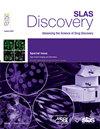纳米体:抗病毒治疗的新前沿。
IF 2.7
4区 生物学
Q2 BIOCHEMICAL RESEARCH METHODS
引用次数: 0
摘要
纳米体来源于羊驼和美洲驼等骆驼类动物的免疫系统,代表了一类新的治疗方法,在对抗呼吸道病毒感染(如SARS-CoV-2和流感)方面具有巨大潜力。纳米体是高度稳定的小生物分子,具有独特的结合特征,可以有效中和病毒颗粒并抑制病毒复制。这篇综述强调了纳米抗体相对于传统抗体的优势,包括生产成本低和对靶抗原的特异性增强。我们讨论了纳米体阻断病毒进入的机制,它们在诊断中的应用,以及它们的开发方法,如噬菌体展示技术。此外,我们探讨了纳米体在临床前研究中的功效及其在临床环境中的潜力。随着研究的深入,结构优化和联合治疗的探索可能会提高其治疗效果,为解决新出现的病毒性病原体引起的全球健康挑战提供一条有希望的途径。本文章由计算机程序翻译,如有差异,请以英文原文为准。
Nanobodies: A new frontier in antiviral therapies
Nanobodies, derived from the immune systems of camelids such as alpacas and llamas, represent a novel class of therapeutics with significant potential in fighting respiratory viral infections, such as SARS-CoV-2 and influenza. Nanobodies are small biomolecules that are highly stable and have unique binding features that allow for the effective neutralization of viral particles and inhibition of viral replication. This review highlights the advantages of nanobodies over traditional antibodies, including cost-effective production and enhanced specificity for target antigens. We discuss the mechanisms through which nanobodies block viral entry, their applications in diagnostics, and the methodologies for their development, such as phage display technology. Furthermore, we explore the efficacy of nanobodies in preclinical studies and their potential in clinical settings. As research progresses, structural optimization and the exploration of combination therapies may enhance their therapeutic efficacy, providing a promising approach for addressing global health challenges caused by emerging viral pathogens.
求助全文
通过发布文献求助,成功后即可免费获取论文全文。
去求助
来源期刊

SLAS Discovery
Chemistry-Analytical Chemistry
CiteScore
7.00
自引率
3.20%
发文量
58
审稿时长
39 days
期刊介绍:
Advancing Life Sciences R&D: SLAS Discovery reports how scientists develop and utilize novel technologies and/or approaches to provide and characterize chemical and biological tools to understand and treat human disease.
SLAS Discovery is a peer-reviewed journal that publishes scientific reports that enable and improve target validation, evaluate current drug discovery technologies, provide novel research tools, and incorporate research approaches that enhance depth of knowledge and drug discovery success.
SLAS Discovery emphasizes scientific and technical advances in target identification/validation (including chemical probes, RNA silencing, gene editing technologies); biomarker discovery; assay development; virtual, medium- or high-throughput screening (biochemical and biological, biophysical, phenotypic, toxicological, ADME); lead generation/optimization; chemical biology; and informatics (data analysis, image analysis, statistics, bio- and chemo-informatics). Review articles on target biology, new paradigms in drug discovery and advances in drug discovery technologies.
SLAS Discovery is of particular interest to those involved in analytical chemistry, applied microbiology, automation, biochemistry, bioengineering, biomedical optics, biotechnology, bioinformatics, cell biology, DNA science and technology, genetics, information technology, medicinal chemistry, molecular biology, natural products chemistry, organic chemistry, pharmacology, spectroscopy, and toxicology.
SLAS Discovery is a member of the Committee on Publication Ethics (COPE) and was published previously (1996-2016) as the Journal of Biomolecular Screening (JBS).
 求助内容:
求助内容: 应助结果提醒方式:
应助结果提醒方式:


